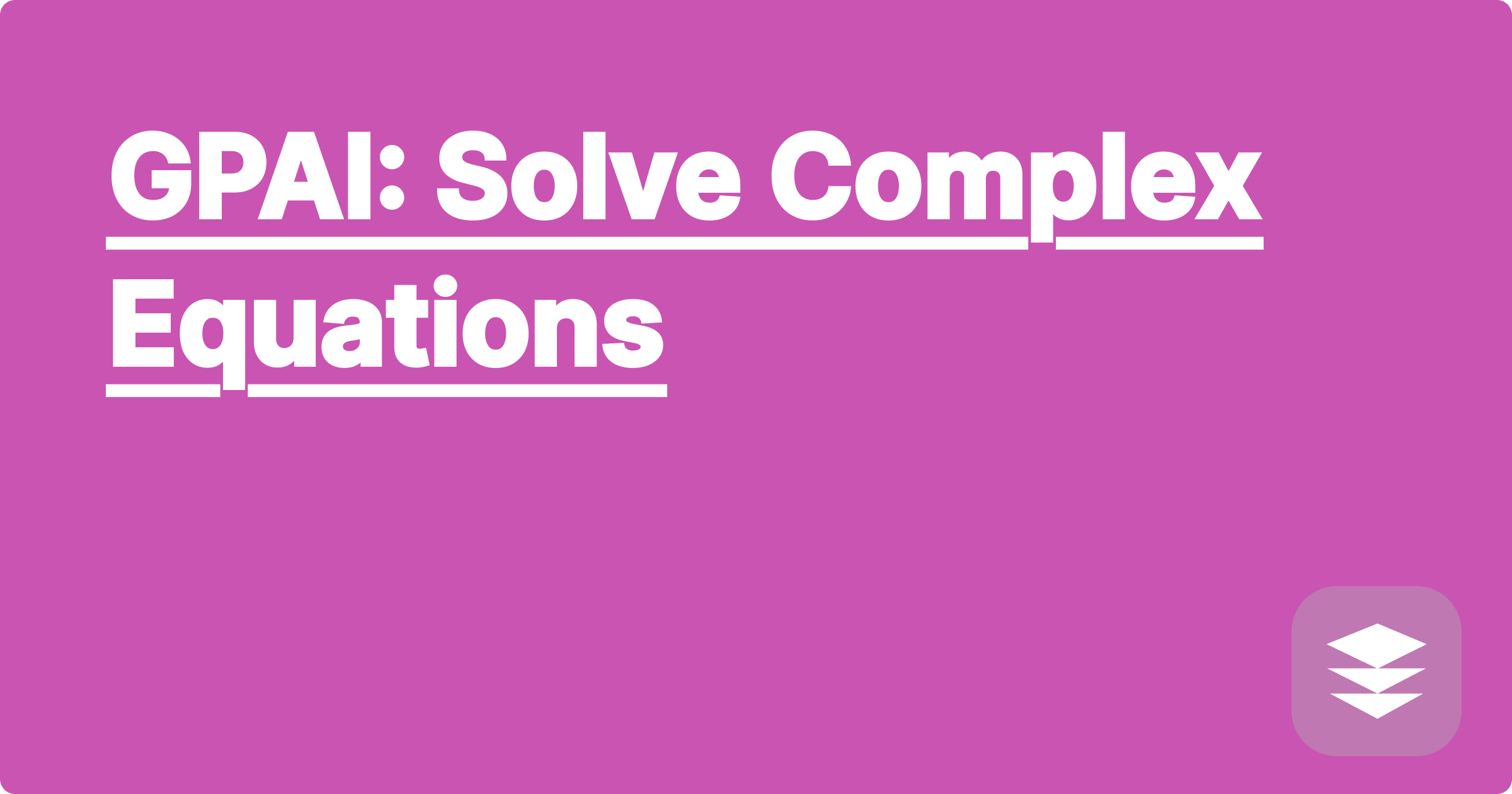
STEM fields often present complex challenges, and one of the most common hurdles for students and researchers alike is solving intricate equations. These equations can range from simple algebraic expressions to complex differential equations, forming the backbone of various scientific disciplines. Fortunately, the advent of artificial intelligence (AI) offers powerful new tools to tackle these mathematical challenges, providing innovative solutions and enhancing our understanding of complex systems. AI-powered tools are transforming the way we approach equation solving, offering a blend of speed, accuracy, and analytical capabilities that can significantly benefit STEM learning and research.
For STEM students and researchers, mastering equation solving is crucial. It's not merely about finding the right answer; it's about understanding the underlying principles and applying them to real-world problems. AI can serve as a powerful ally in this journey, providing not just solutions but also insights into the problem-solving process itself. This can help students grasp difficult concepts, explore different approaches, and ultimately develop a deeper understanding of the subject matter. Researchers can leverage AI to accelerate their work, exploring complex systems and generating hypotheses with greater efficiency. This symbiotic relationship between human intellect and artificial intelligence has the potential to revolutionize STEM education and research.
The challenge of solving complex equations arises from various factors. Equations often represent intricate relationships between multiple variables, requiring sophisticated techniques to unravel. These techniques can be time-consuming and error-prone, especially when dealing with higher-order equations or systems of equations. Furthermore, the sheer volume of equations encountered in many STEM fields can be overwhelming, demanding efficient and reliable solutions. For instance, in physics, equations describe the motion of objects, the behavior of fluids, and the interactions of particles. In chemistry, equations govern chemical reactions, equilibrium states, and thermodynamic processes. In engineering, equations are used to design structures, analyze circuits, and model complex systems. The diversity and complexity of these equations necessitate robust tools that can handle a wide range of mathematical challenges.
AI tools like ChatGPT, Claude, and Wolfram Alpha offer innovative approaches to solving complex equations. These tools leverage the power of natural language processing and symbolic computation to provide not just numerical solutions but also step-by-step explanations and alternative approaches. ChatGPT and Claude, for instance, can understand natural language queries about equations, providing solutions and guiding users through the problem-solving process. Wolfram Alpha, on the other hand, excels at symbolic computation, handling complex mathematical expressions and providing detailed analyses. These AI tools complement each other, offering a comprehensive suite of capabilities for tackling diverse equation-solving challenges.
Using these AI tools is generally straightforward. First, clearly define the equation you want to solve. This might involve writing it down in standard mathematical notation or expressing it in natural language. Then, input the equation into the chosen AI tool. For example, in Wolfram Alpha, you can directly type the equation into the input field. In ChatGPT or Claude, you can phrase your query as a question or a request, such as "Solve the equation x^2 + 2x - 3 = 0". The AI tool will then process the input and provide the solution. This might be a numerical answer, a symbolic expression, or a graphical representation, depending on the nature of the equation and the capabilities of the tool. Many tools also offer step-by-step explanations, allowing you to understand the underlying logic and learn from the process.
Consider the equation ax^2 + bx + c = 0, the general quadratic equation. Inputting this into Wolfram Alpha yields not just the solutions using the quadratic formula, but also alternative representations, potential factorizations, and even graphical visualizations. Another example is solving a system of linear equations, such as x + y = 5 and 2x - y = 1. AI tools can quickly solve this system, providing the values of x and y that satisfy both equations. These tools can also handle more complex equations, such as differential equations like dy/dx + 2y = e^x. Inputting this into an AI tool can yield the general solution and, with appropriate boundary conditions, the particular solution. These examples demonstrate the versatility of AI tools in tackling diverse equation-solving challenges across various STEM fields.
To effectively utilize AI in STEM education and research, consider several strategies. First, focus on understanding the underlying concepts, not just obtaining the answer. Use AI tools as a supplement to your learning, not a replacement for it. Second, experiment with different AI tools to find the ones that best suit your needs. Each tool has its strengths and weaknesses, so exploring various options can broaden your problem-solving toolkit. Third, practice regularly. The more you use these tools, the more proficient you become at leveraging their capabilities. Finally, be mindful of the limitations of AI. These tools are powerful but not infallible. Always double-check the results and ensure they align with your understanding of the problem.
In conclusion, AI tools offer a powerful new approach to solving complex equations, providing valuable support for STEM students and researchers. By leveraging these tools effectively and focusing on understanding the underlying concepts, you can enhance your learning, accelerate your research, and unlock new possibilities in STEM fields. Explore the available AI tools, experiment with different approaches, and integrate these powerful resources into your academic journey to unlock your full potential in STEM. Remember that these tools are constantly evolving, so staying updated on the latest advancements can further empower you to tackle even more complex challenges in the future.
GPAI: Ace Physics HW in Minutes
Chem Exam Prep: GPAI's Cheat Sheet
GPAI: Conquer Calculus Problems
GPAI: Engineering Lab Data Ace